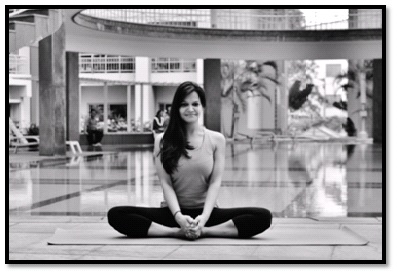I was leading a class of students through the Surya Namaskars yesterday. Most of these students know each other really well and have been in the class for about the same amount of time. They can all do the Surya Namaskar in their sleep. So they are dedicated, punctual and regular with their practice. However, differences still abound.
For one, there was a difference between how each of them was performing the Surya Namaskar. There are always those students who are a second or two ahead of the instruction they can anticipate coming. Then there are those who will follow your instructions to the T.
The first kind will always be a little ahead of their classmates. Their foot will start sliding back from Ashwasanchalanasana to Chaturanga a couple of seconds before everyone else. They will finish the round a few seconds before the rest of the class.
The second kind will also glide from one pose to another, but in 100% synchrony with the teacher’s instructions. As the last instruction comes to a close, so does their namaskar.
You can tell a lot about a student and how they live their lives by observing how they practice yoga.
What became jarringly clearer as time went on was the fact that none of these students were pausing between the poses. The transition from one post to the next was mechanical and thoughtless. They were doing it by rote. Each pose led automatically to the next. Their bodies didn’t pause for a second in any of the poses to assimilate the moment between poses. The moment when you complete one pose and are poised to do the next. This moment, which in the case of something repetitive like the Surya Namaskars, exists only briefly, is an opportunity for the body and the mind to synchronize. This moment is the ‘pose in repose’ that BKS Iyengar often talked about.
This moment exists in life as well. It’s the transition from the old job to the new, from one relationship to the next, from one task to another, from work to a vacation and back, from one project to the next, from one meeting to the next, from dinner to dessert etc. These periods of transition are meant for deep breaths and reflection.
What did I learn from my old job? Why did I really quit? What am I taking with me to my new job? Am I doing the right thing? (Is my asana in alignment?) How has my old job shaped me? What do I hope to gain from the new job?
Am I at peace? What is the impact the relationship had on me? Do I even like being in a relationship? Am I alone or am I lonely? Am I OK with myself? (How does my body feel in this asana?)
Was it a task/project/meeting well done? Did it drain my energy? (Is this my best version of this posture? What if I tried to straighten my leg a bit more?)
Do I feel rested enough to go back to work? What does ‘rested’ feel like? (What modifications can I make so that this asana doesn’t lead to injury?)
Was the dinner enjoyable? Would the dessert be worth the calories? (Why am I doing the Surya Namaskars? After all, I can choose not to and instead save my energy for challenging asanas.)
Transitions are important in yoga, and they are important in life. The moment between an inhalation and an exhalation is given a lot of importance in meditation and pranayama practice because it is in that moment that we can assimilate what we have taken in, and prepare for what we want to let out. Many people are uncomfortable with the ‘in between’ time. They are uncomfortable with not having a job, or not being in a relationship, and want to complete their next task yesterday.
Only when we inhale fresh clean oxygen are we able to exhale the harmful carbon dioxide. Only when you understand what exists in your life right now will you be able to let go of all that inhibits the shaping of a fulfilling future.
